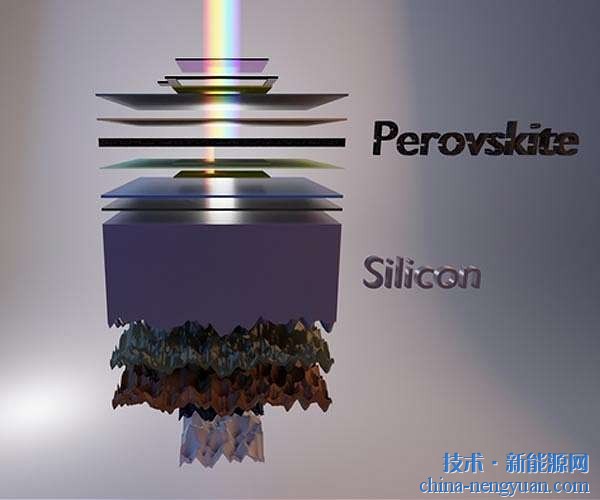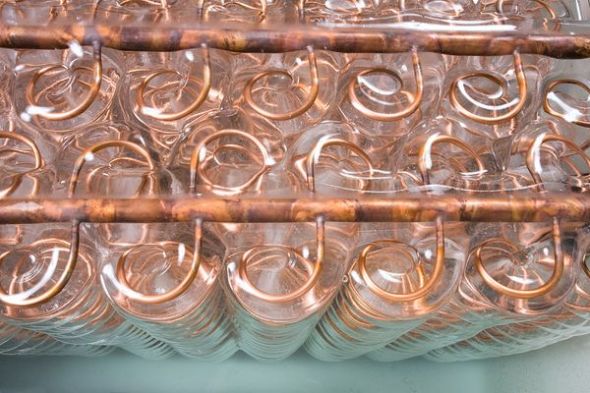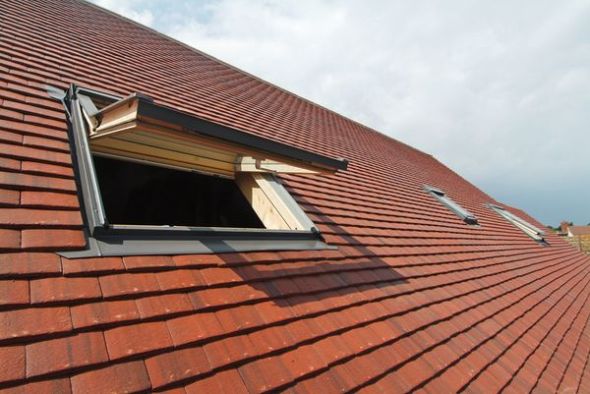 |
Solar cooling (Photo: Tim Wimborne, Reuters)
According to a report from the National Geographic website on August 8, the researchers proposed a series of ideas to further utilize the energy of nature, such as solar cooling, in order to create greener air conditioners. Air conditioning has changed the summer life of residents in developed countries, but they also carry expensive electricity. Air conditioning was invented by Willis-Havilland-Carlis in 1902. Early air conditioners refrigerated by passing air through a cooling coil. Current conventional air conditioners basically take the same approach. They consume power madly and compress the gaseous refrigerant into a liquid state in each cooling cycle. In this context, a series of ideas for building green air-conditioning emerged.
Solar cooling
For years, scientists around the world have been pondering over how to use the sun to cool the room. With the advent of summer, the heat of the sun has reached its peak, exposing roofs and windows, raising the temperature of the interior, which makes us feel very uncomfortable. Solar cooling seems to be a violation of common sense for people who first think of this uncomfortable person. But for those who want to use huge amounts of solar energy, this is a perfect idea.
As the demand for air conditioning in summer soared, the power system was under tremendous pressure and reached a critical point. Winter home heating also consumes a lot of electricity, but we also have many other options, such as natural gas, oil, and wood. The traditional cooling method relies on electricity, causing the US electricity demand in summer to soar, which is 20% higher than the winter peak. More than 80% of households in the United States have air-conditioning, which consumes 8% of the total household electricity. Power companies must start peak-scale power plants in order to guarantee the power demand for hot summer afternoons. Power plants that provide peak power often use traditional, inefficient fossil fuels.
Although air-conditioning in Europe has not yet reached a very popular level, the cooling demand in Europe is also growing. Especially after the terrible heat wave in 2003, 35,000 to 52,000 people were killed by heat waves. To this end, Europe has conducted the most detailed research on the potential of solar cooling. Recently, some companies have introduced air conditioners using solar photovoltaic panels, such as the panels presented in the photos. The photograph was taken in Sydney, Australia. A man is installing solar panels on the roof.
LG Electronics' hybrid solar cooling system and Reynolds' solar-assisted heating and cooling system are two representative examples. Connecting solar photovoltaic panels with traditional air conditioning is not a perfect solution. Normally, a central air conditioner for a home needs to consume 2,000 to 5,000 watts of electricity. LG's solar panels can only provide 70 watts of electricity, which means that only a small amount of electricity can be saved.
Reynolds said that their system uses a 190-watt solar panel that can save heating and cooling costs by half. This system uses the most efficient model, which can increase the number of solar panels, and consumers can also obtain real-time data on power consumption. The researchers said that they can make greater progress in the development of low-energy refrigeration systems.
2. Heat-driven air conditioning

Heat-driven air conditioner (Image: Thermax)
A facility at the Industrielle Werke Basel in Basel, Switzerland, the gleaming pipeline is actually a thermally driven air conditioning system. This system helped the banks, hotels and office buildings in the Adelgade area of ​​Copenhagen, the T-Mobile data center in Munich and the Fiumicino airport in Rome.
The heat-driven air-conditioning system is manufactured by Selma, Pune, India. They call this system a sustainable solution to current environmental problems. As early as the 1920s, this technology, suction cooling, was put into commercial use. As with standard air conditioners, inhalation chillers use lower boiling point refrigerants. When the refrigerant evaporates, it will eliminate the heat in the air. Standard air conditioners use electric compressors to turn gaseous refrigerants into liquids. Inhalation chillers use thermocompression to restart the cycle. They only require heat for operation and do not have any moving parts.
Inhalation chillers are expensive, have a low coefficient of performance, and at the same time are limited by the amount of inhaled heat and cannot output a high amount of refrigeration. But if installed in an environment that generates extra heat, it is an efficient solution, such as the Serma Thermal-Powered Air Conditioning System installed in Basel, Copenhagen, Munich and Rome. In addition, this system does not use hydrochlorofluorocarbon refrigerants but uses water, lithium bromide or ammonia. Hydrochlorofluorocarbon is a strong greenhouse gas.
3. Desiccant enhanced evaporation air conditioner

Desiccant Enhanced Evaporative Air Conditioning (Photo Credit: Patrick H. Corkery, National Renewable Energy Laboratory)
The U.S. Department of Energy’s National Renewable Energy Laboratory (NREL) in Golden, Colorado, and senior mechanical engineer Eric Kozuba exhibited a system component. This system verifies the basic facts behind the old saying, "Hurt instead of heat."
Cozubal and NREL’s colleagues are working on a new generation of air-conditioning technology called “Desicant Enhanced Evaporative Air Conditioning,†or “DEVap.†Kozuba said that in humid climate areas, this type of air conditioner consumes 40% less electricity than conventional air conditioners, and 80% to 90% of the desert areas in the southwestern United States. The local air is very dry. DEVap air conditioning can significantly reduce the demand for electricity. The only place where the system uses electricity is the fan, which is used to drive the air.
The secret of DEVap air conditioning refrigeration lies in a liquid dryer, a very strong salt solution, which removes moisture from the air with minimal power consumption. In contrast, electric dehumidifiers often consume a great deal of power. After air drying, it can be cooled by evaporative cooling. Its working principle is very simple, similar to the pool. When the water in the pool changes from a liquid state to a gaseous state, the temperature of the surrounding air will be greatly reduced.
Some families in dry climates have used so-called “mat coolersâ€, but due to the growth of fungi, they are difficult to maintain. The air conditioners developed by NREL can work both in wet conditions and in dry conditions. In this indirect evaporation system, the air flow is kept dry, and the wet side is closed. In Kozuba's words, "only as a heat sink," it will not breed fungi.
In this way, the air conditioner can achieve a true revolution. Because of the low power consumption and the use of heat instead of mechanical drive, running the system using solar energy is much more reliable than conventional high energy-consuming air conditioners. Kozuba said: "The desiccant is prepared for solar cooling, and it can also control humidity in an efficient manner. This air conditioner saves electricity, high insulation and no need to worry about fungal and sick building problems. If you want to significantly increase the building For energy efficiency, we must use different air conditioning technologies.†After successfully completing the testing of the small prototype of the DEVap system, NREL scientists are making a larger prototype to verify the commercial prospects of this technology.
4. "Freeze" Air Conditioning Requirements

"Freeze" Air Conditioning Requirements (Image Source: Ice Energy)
Wind Energy Ice Energy Co., Colorado, proposed the concept of “freezing air conditioning demand in summer†and is currently working with power companies in California and Ontario. The heat storage tank developed by Ice Energy is connected to the standard rooftop air conditioning system in commercial buildings. At night, when the temperature is low and the demand for the power system is also reduced, the electric device named "ice bear" freezes 450 gallons (about 1703 liters) of water. The ice bear's huge ice cube acts as a battery to store low-efficiency nighttime energy. In the picture, the coil is surrounded by ice.
As the temperature increased during the day and the demand for electricity increased, the ice bear took over the operation of the compressor driven by the electric motor in the air-conditioner. Ice bears do not expel heat by compressing the gaseous refrigerant into a liquid state, but instead act like ice. In addition, because the heat in the building is transferred to an ice tank - making ice on a cold night - the system does not have to behave like an air-conditioning compressor that is exposed to noonday sunlight, so it saves electricity. . Ice Energy said that a 5-ton compressor can allow the ice bear to cool for 6 hours. Brian Parsonette, founder, vice president and chief technology officer, said: "It's a huge animal and it's a huge battery."
Since power companies do not want to start low-efficiency peak-day power plants during the day and instead use ice bears to reduce air-conditioning needs, they can start more efficient power plants in the evening. This system can save 30% to 40% of power generation fuel. Parsonnett said: "The power companies can get considerable benefits."
By using ice bears to permanently change air-conditioning demand, power companies can avoid or delay capital expenditures. Ice Energy said that the installed cost per megawatt is about 1.5 million U.S. dollars or so, and the cost of ice bears is roughly the same as the cost of conventional electricity generation and transmission. A total of 11 ice bears were installed on the roof of the US Social Security Bureau office building in Reading, California, northern Sacramento, and in the fall of 2010. Each ice bear is used with a 5-ton high energy efficiency Trane air conditioning system.
Glendale, a suburb of Los Angeles, California, replaced its aging 80-year-old low-efficiency HVAC air-conditioning system with a new type of energy-efficient air-conditioning system and ice bears by providing a stimulus fund to replace local construction. According to Glendale estimates, the average annual electricity consumption at each location during the initial phase of the project was reduced by 386,000 kilowatt-hours. In eastern Ontario, Canada, Hydro Hydro and Veridian Connections Power Company are implementing a pilot program to install 12 ice bears to reduce peak demand for electricity. This program is funded by the Ontario Electric Power Environmental Protection Fund program.
5. Liquid circulating air conditioning system

Liquid circulating air conditioning system (Source: Harvard University)
Cold water circulation This ancient Roman refrigeration method has already settled at Harvard University. Its operating service facility at Blackstone Avenue, 46 Cambridge, Massachusetts, installed a liquid circulating cooling air conditioning system. The building uses a series of energy-efficient innovations, and the liquid-circulated cooling air-conditioning system is one of them, helping it get the highest rating of the US Green Building Council - LEED Platinum.
Jeffrey Smith, head of facility maintenance at Harvard University, said: “When entering this building, the public is always amazed by its quietness. They do not know the specific reason, but there is really no mechanical noise here.†Liquid circulation cooling is achieved by convection . Cold water (usually between 7.2 and 10 degrees Celsius) circulates in walls or roof pipes. As the air passes through the pipe, it falls to the wall due to cooling. Disc devices around the pipeline are responsible for capturing the condensed water droplets and returning them to the source of the water. The Harvard University building uses 170 liquid loops to cool and heat 40,000 square feet (3716 square meters) of office space. Because there is no need for a fan to blow gas through the pipe, the noise in this system is low. The U.S. Department of Energy’s Lawrence Berkeley National Laboratory pointed out that 20% of the space needed to use traditional air conditioning systems can use liquid circulation systems.
A system developed by Edwards Valance can be installed on a wall, saving $183 per device per year compared to fan coils. Edwards Valance spokesperson Pat Corvin said that the installation cost per square foot (about 0.09 square meters) is around $2.5, depending on the type of building, the contractor's fees, and location. She said: "They may think that the cost is slightly higher than that of a standard fan coil unit or an integral terminal air-conditioning system, but the reality is that the cost can be recovered in as little as three years."
6. Underground air conditioning

Underground air conditioning (Source: M. Timothy O'Keefe, Alamy)
The first American president, George Washington, was born with "underground air conditioning." In June, the George Washington Birthplace National Monument, located near Fredericksburg, Va., was once also known as the Popes Creek Plantation - Propane-based heating. The refrigeration system was replaced by a geothermal system. In addition to replacing fossil fuels with renewable energy, the constant temperature of the earth, the noise of this system is also very low, which is very important to maintain the atmosphere of this building. Dick Delesch, head of cultural and natural resource management and conservation at the park, said: "This system has been a huge success and its efficiency is terrifying."
The Geothermal Energy Association states that geothermal pumps drive water or other liquids to circulate in pipes 10 to 300 feet (3 to 91 meters) underground. Regardless of the season, underground temperatures are maintained at 12.7 degrees Celsius. In warm weather, the heat of the building was brought underground and returned after cooling. In cold weather, the underground temperature exceeds the indoor temperature. At this time, this underground journey also plays a role in heating the house, thereby reducing the energy demand.
The U.S. Environmental Protection Agency pointed out that geothermal pumps consume 25% to 50% less electricity than traditional heating or cooling systems, reducing energy consumption and carbon emissions. In addition, geothermal pumps have high efficiency in wet areas and can control indoor humidity to about 50%. The payback period for this system varies depending on the circumstances. Doug Daugherty, CEO and president of the geothermal exchange organization, just installed a $18,000 geothermal system at his home in Springfield, Illinois. He said that although the cost is twice that of traditional air-conditioning systems, the cost can be recovered within 4 to 5 years, and the annual electricity cost will be reduced by two-thirds.
7. Roof fan

Roof fan (Photo Credit: Justin Kase, Alamy)
Ordinary fans send us cool by blowing air, but they do not cool the air. Fully ventilated fans take a very different approach, installed in the attic or ceiling between the attic and the living space, designed to drive a large number of stale heating rises, and finally discharged out of the house, while sending fresh air with a lower outside temperature houses.
Quiet Cool, a manufacturer of exhaust fans for the entire house, says that the best way to use a full roof fan is to turn off the air conditioner when the outdoor temperature falls below 29 degrees Celsius at night, and then turn on the fan. RE Williams, which is responsible for the sale of all-flood fans, says that the fan is priced between $430 and $1550. Mary Williams-Driscoll of RE Williams pointed out that the energy-saving rate and payback period depend on the specific conditions and climate of the house. "Our fan really does save money. It's more energy efficient than traditional air conditioners."
The U.S. Environmental Protection Agency said that if installed improperly, all roof fans will cause noise problems. Normally, high-power fans emit less noise at low speeds than high-speed, low-power fans. The Bureau of Protection recommends using rubber or felt padding to install all fans to reduce noise while setting the multi-speed fan to low speed. Driscoll said that RE Williams' full-house fan noise is within an acceptable range. Of course, this kind of fan can only work when the outdoor temperature is lower than the indoor temperature. In the case of a sharp drop in nighttime temperatures, full-floor exhaust fans can save 50% to 90% of air-conditioning costs. (xiaowen)
Customized Handle,Minimalist Walnut Door Handle,Aluminum Alloy Door Handle,Stainless Steel Door Handle
Guangzhou Junpai Hardware Co., Ltd , https://www.junpaihardware.com